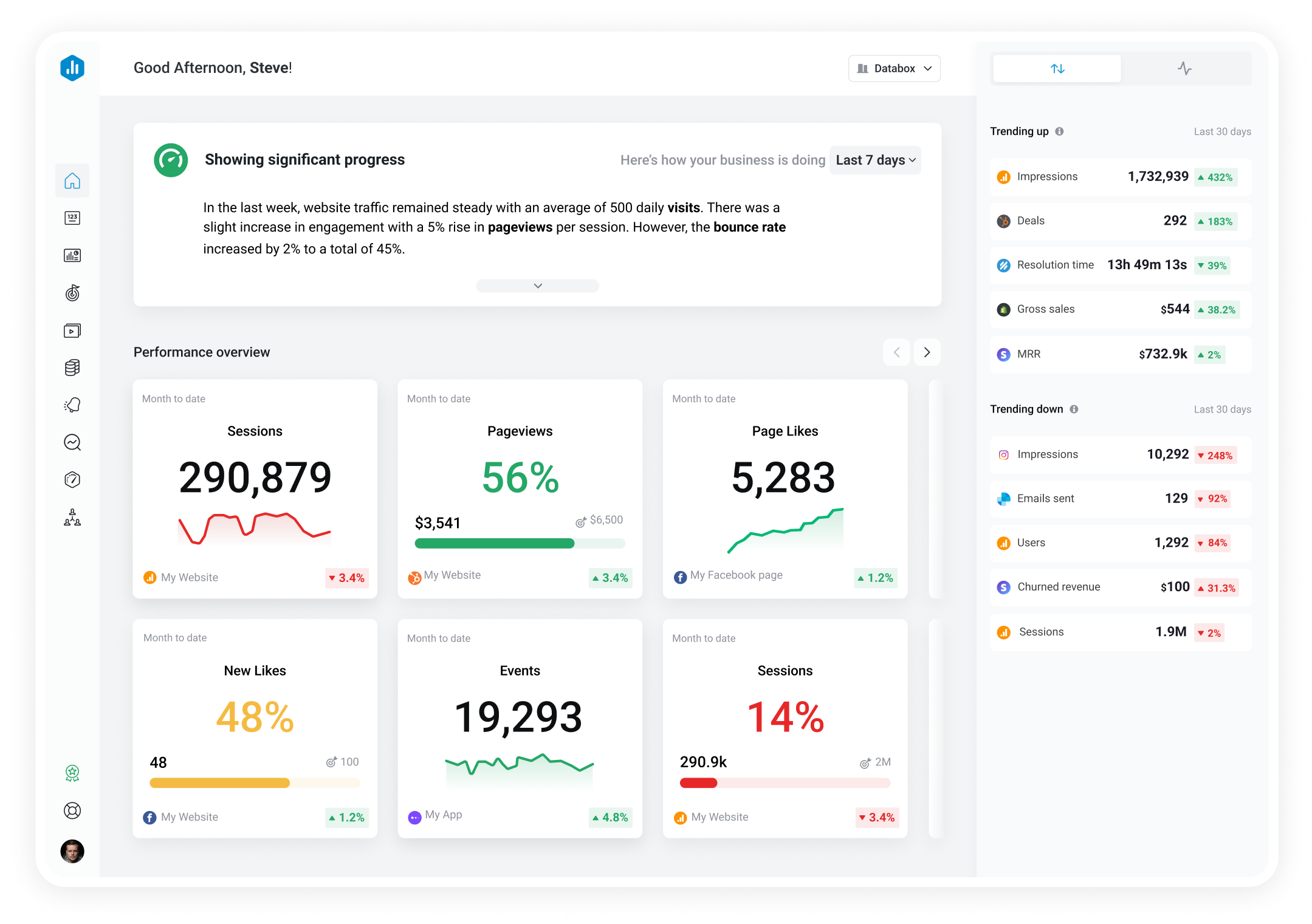Track all of your key business metrics from one screen
GET STARTED
 Stripe
Churned Customers
Stripe
Churned Customers Churned Customers measures the rate at which customers stop using a company's product or service within a certain period of time. It is an important metric for subscription-based businesses to track customer retention and identify areas for improvement.
With Databox you can track all your metrics from various data sources in one place.
Churn is the rate at which customers stop using a product or service and discontinue their relationship with a business.
This metric is mostly associated with the SaaS industry, but it’s also common in any other business with a subscription-based model.
Churn can have a significant impact on a business’s bottom line, as acquiring new customers can be more costly than retaining existing ones.
High churn rates can indicate underlying issues such as customer dissatisfaction, competitive pressures, or lack of engagement with the product or service.
Churn rate is typically calculated by dividing the number of customers lost during a specific period by the total number of customers at the beginning of that period, and then multiplying by 100 for a percentage result.
Churn Rate = (Number of Customers Lost / Total Number of Customers) x 100
Let’s say a company had 1,000 customers at the beginning of the month and during the same month, 50 customers decided to cancel their subscriptions.
Using the formula, we find that the churn rate for that particular month would be 5%.
There is a long list of factors that influence a business’s churn rate and there are no universal benchmarks that can be considered at face value.
However, there are some general ones that can give you useful insight and help you better understand the numbers in your industry.
We even pulled up some data from our product that you might find interesting:
If you want to stay on top of future trends and be able to instantly compare your performance to companies just like yours (in any given industry), you can join our Benchmark Groups – it’s free for everyone!
In terms of more general industry percentages, SaaS companies usually find a 5% to 7% churn rate acceptable.
However, the stage the company is in also plays a huge part.
For example, early-stage SaaS startups often experience higher churn rates initially as they refine their product-market fit and value proposition. They commonly see a churn rate of 10% to 20%.
At the same time, established SaaS companies with years of experience and more loyal customers might find anything over 3-4% unacceptable.
High churn rates can negatively impact your revenue and growth potential, which is why finding ways to increase customer loyalty is crucial.
We talked to hundreds of leading marketers and compiled some of the strategies they find the most useful:
More resources to help you improve:

Used to show a simple Metric or to draw attention to one key number.

Used to illustrate numerical proportions through the size of the slices.

Used to show comparisons between values.
Databox is a business analytics software that allows you to track and visualize your most important metrics from any data source in one centralized platform.
To track Churned Customers using Databox, follow these steps:
 Goals
Goals Scorecards
Scorecards Metric Digest
Metric Digest Metric Builder
Metric Builder Data Calculations
Data Calculations Performance Screen
Performance ScreenThe Stripe SaaS MRR Growth dashboard tracks MRR, net new customers, churn rate, and revenue trends. It provides insights into MRR breakdowns (new, upgrade, churn MRR), helping SaaS businesses optimize subscription growth and retention.

Use this Stripe report to share important ecommerce insights into churn rate, MRR growth, revenue volume, new customers, and more.

Customers can churn for various reasons, including dissatisfaction with the product, lack of perceived value, competitive alternatives, poor customer experience, or changing needs.
Or, they may encounter issues with the product’s functionality, encounter difficulties in onboarding or usage, or feel neglected in terms of customer support. Pricing, contract terms, and billing issues can also play a part.
Churn analysis focuses on understanding and quantifying the rate at which customers discontinue their relationship with a company.
On the other hand, retention analysis focuses on understanding customer retention. It involves studying customer behavior, preferences, and engagement to identify strategies that enhance customer loyalty and reduce churn.
To analyze churn data properly, you need to consistently stay on top of your most important churn KPIs and track key churn metrics like cohort analysis, customer lifetime value, and churn rate in real-time.
And the best way to do this is through business analytics tools like Databox.
Instead of juggling dozens of spreadsheets and logging into multiple tools to extract data, you can connect your data source to Databox and pull out the most important metrics that you want to keep an eye on.
If you’ve been spending hours on churn analysis so far, you can use Databox to cut that process down to just a few minutes.
